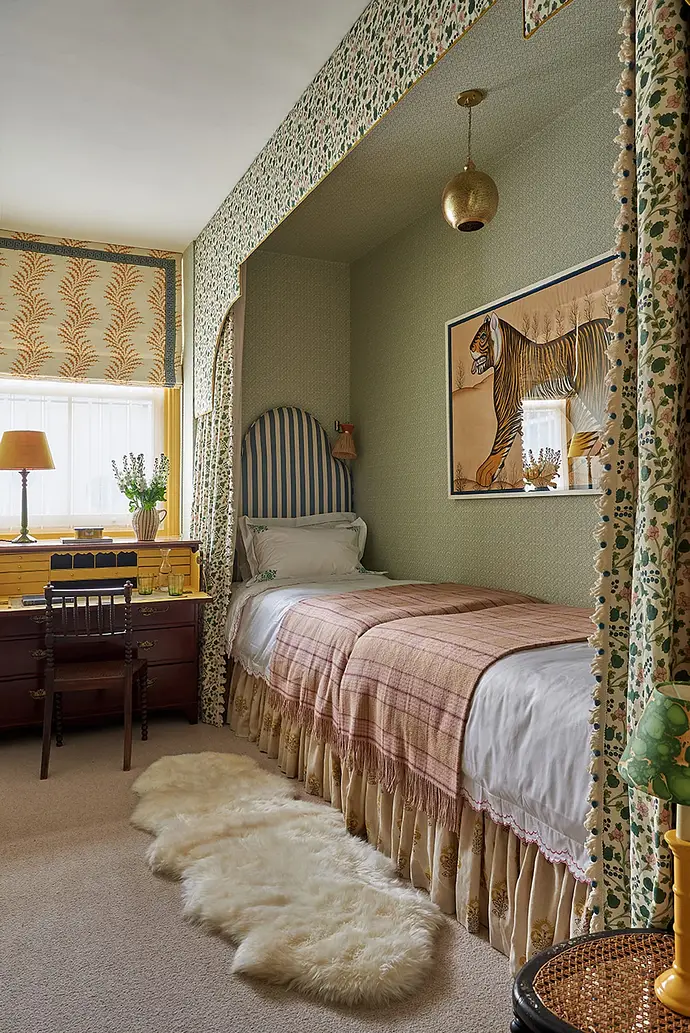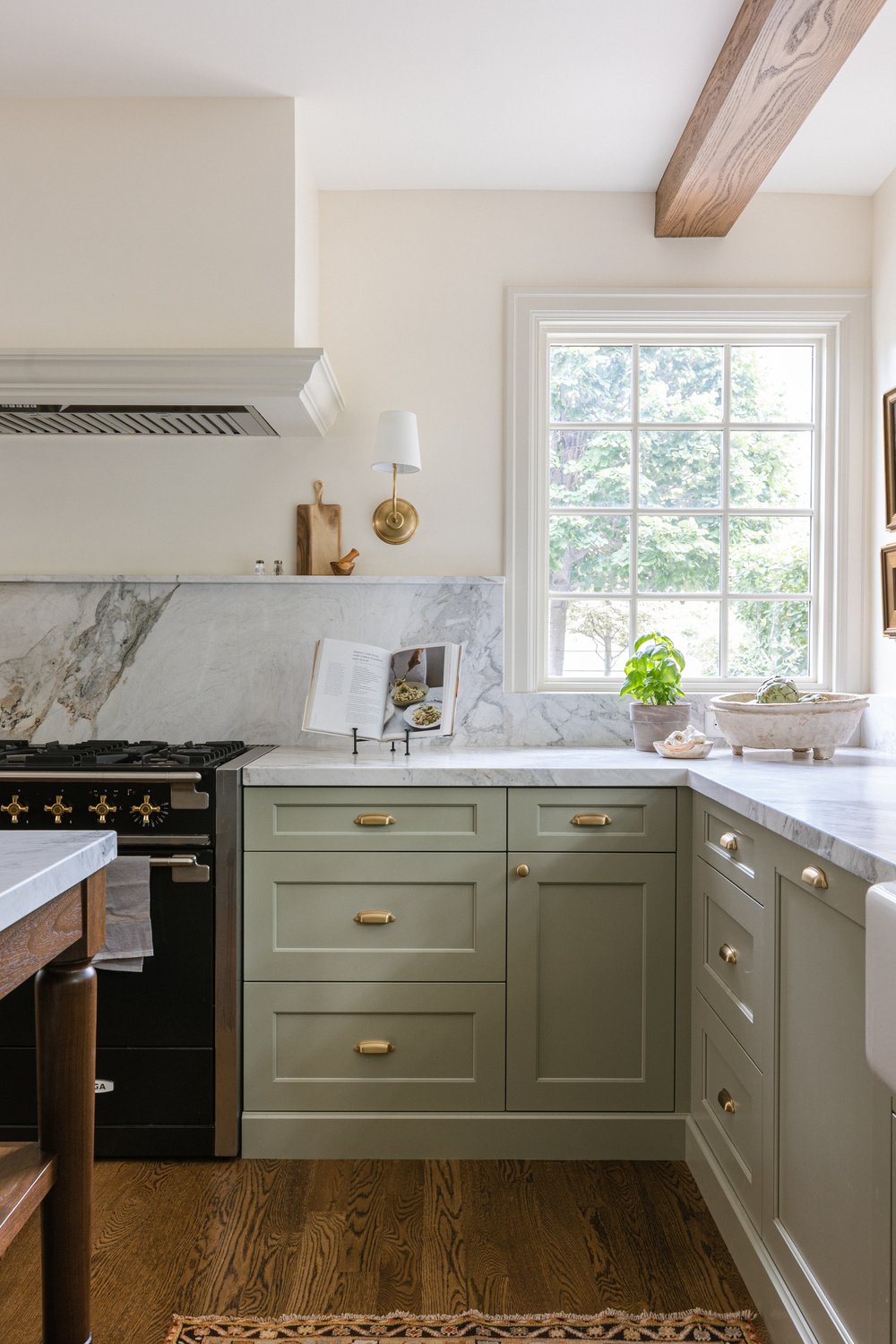This post contains affiliate links.
Today marks the last article of our Hue Knew Series: How To Pick A Color Palette Using The Color Wheel. In my previous lessons, I have talked about 3 playful yet sophisticated color palettes, an advanced color palette that designers love, the key to choosing complimentary colors, and the art of monochromatic color schemes. Today I will be diving into split-complementary color palettes.
First, let’s discuss what split-complementary colors are –
What are split-complementary colors?

If you remember from past lessons, complementary colors are any two colors opposite of each other on the color wheel. A split-complementary color palette, on the other hand, is any color paired with the two colors on either side of its complement. Split-complementary colors consist of 3 colors and form a “Y” on the color wheel.
5 Homes With A Split-Complementary Color Palette





If you are comfortable with color, paint or wallpaper the walls in one of the three colors in your palette. Incorporate the other two colors through furniture, rugs, artwork or tapestries. If you prefer a more subtle approach to color, or if you’re just dipping your toe into color play, paint the walls a neutral color and sprinkle in color through fabrics, artwork, and decor. Take the rooms below as a perfect example of the two routes you could take. One room is fully engulfed in color and the other follows a more subtle approach.




To pick a split-complementary color palette for your own home, look at a color wheel and draw an imaginary “Y” over top. Rotate the “Y” on the center axis to discover all 12 color combinations that are possible. Once you pick a trio of colors you like, decide which hue will be the primary color, which hue will be the less-used complementary color, and which hue will be incorporated through little pops here and there. As mentioned in previous articles, this formula is called the 60/30/10 rule. Read more about the 60/30/10 rule here.
Does this give you some guidance moving forward? I hope you feel confident picking a color palette for your home! You have the knowledge to do it now, so just go for it!
Start Your Split-Complementary Color Journey

Leave a Reply Cancel reply
Where behind the scenes, exclusive advice, and candid conversations are sent straight to your inbox every week.



I love your articles! While I took one year of art , the review of color wheel palettes with 60/30/10 rule helps me consider my downsizing to the farm and is helping me decide what to keep in a new arrangement and what goes. We have found your remodels very helpful in coming up with ideas to customize our farm house as we build it. Thank you!
I’m so thrilled to hear this was helpful to you! Having a bit of structure when it comes to narrowing down colors helps immensely!